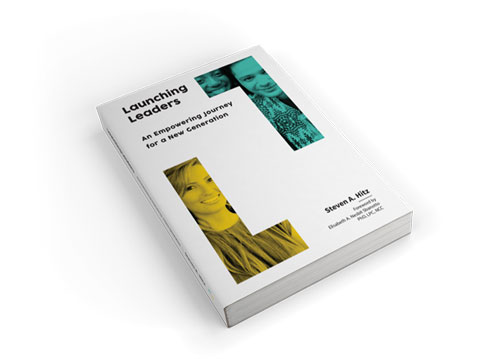
A pastor noticed that a parishioner had stopped attending his services. The parishioner evidently felt he was no longer noticed, loved, or missed by his attendance, so he simply stopped coming.
The pastor gave it some prayerful thought and paid a visit to the elderly man on a very snowy and cold winter day. He knocked on the door. The man opened the door, and they had a cordial greeting, but beyond that, neither said a word.
The man motioned to a chair to join him by the fire. After a good time of only the sound of wood and coals crackling and feeling the warmth of the fire, the pastor picked up the fire prod and began poking at the coals. He moved a glowing coal away from the fire. They both sat watching as the coal lost its heat and eventually stopped glowing. Several minutes went by in silence. Then, the pastor pulled the coal back to the edge of the fire as they watched it rekindle and glow again, adding heat and luster as the glowing embers glistened off their warming faces. The pastor put the prod down, tipped his hat and walked to the door and let himself out.
The following Sabbath, the man returned to the congregation. The pastor welcomed him by name and asked what brought him back. The man said “Pastor, at my home by the fire, you gave the best sermon I’ve ever heard you give without saying a word.”
This story I recently heard is directly relatable to the epidemic of anxiety and depression in our world today, especially among our youth. Feelings of anxiety and depression often lead to isolation. The healing process is a two-way street. Those who notice the dying ember must reach for it and bring it back into the fire. Those who are the dying ember must allow themselves to be open to authentic outreach and be willing to be moved (both on their own and by the love of the community).
The question is how to begin this outreach. One of the more evident answers is to do as the pastor did, and not say a word—just listen and be there for each other.
In his book, Happy Mind Happy Life, Dr. Rangan Chatterjee articulated 10 rules for listening to others.
- Be non-judgmental.
- Be curious.
- Practice true sympathy: not “I know how you’re feeling,” but, “I don’t know how you’re feeling but I am here for you.”
- Take time to really listen; don’t just think about the next thing you’re going to say.
- Show them you are listening with your body language—posture, tone of voice, eye contact, not being distracted by your phone.
- Don’t try to predict where the conversation will go next.
- Embrace silence.
- Repeat back what they’re saying in your own language.
- Don’t try to fix them or rush in to tell them what you would do. Instead, try asking “How did that feel for you?” and then actively listen without interruption.
- Have no attachment to the outcome of the conversation.
There are also keys for listening to ourselves and surrounding ourselves with people in selective circles of trust. Parker J. Palmer, talks about developing circles of trust in his book, A Hidden Wholeness. Not surprising, he notes both the need for companionship and community in our journey, as well as being able to live in silence to effectively “listen” for our inner voice. He writes“….We all have an inner teacher whose guidance is more reliable than anything we can get from a doctrine, ideology, collective belief system, institution, or leader.”
Becoming acquainted with our inner voice (or teacher) is essential. Though it is a unique voice for each of us, it still requires community for our inner truth to leave isolation. This journey toward inner truth, he said, is too taxing to be made solo, too deeply hidden to be traveled without company, and needed to find the courage to venture into alien lands (a new life of fulfillment).
The space we make to discover and listen to this inner voice is highly individual. No two people may take the exact journey, and that is the beauty of discovering our inner voice It is OUR personal teacher—no one else’s. It is OUR personal tutor and speaks only to us if we are listening.
For me, finding my inner voice requires peace. In some recent travels I had a chance to compare total chaos in a busy city to the absolute peace of a secluded lake. What was the difference between them? The city was a cacophony of noise with masses of people like salmon swimming upstream. While at the lake, I could sit and hear myself breathe as I viewed the large expanses of mountains and water. The silence around me brought the peace I was seeking, and my inner voice began to speak to me. Those trusted friends who were with me were kind enough to watch me breathe without saying a word, until I was ready to reveal some of what my inner voice was telling me. I extended the same courtesy to them. This became a beautifully healing experience.
In all my research and lived experiences dealing with these issues, I’ve felt simple observations and suggestions like these are helpful. The formula that works for me in lowering my anxiety and limiting bouts of depression are these:
• Find a place for peaceful silence without being too isolated; a space to hear the inner voice guiding your next steps.
• Be with trusted friends and family who have the skills to listen, really listen (sometimes without saying a word), and to enjoy the warmth of their figurative fires to keep the embers of hope alive.
• Practice the art of listening as you figuratively reach for the fire poker and gather in the dying embers to ignite hope.
Evolution requires reflection. I hope as you reflect on the impressions of the inner voice, ponder the story of the dying ember, and commit to a being a better listener, you will discover ways to be reignited and experience the glow and warmth you truly deserve.





